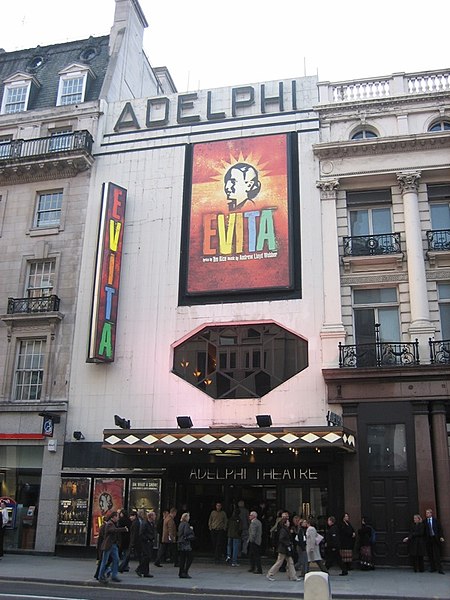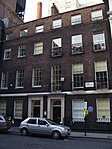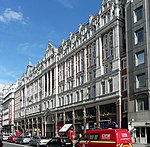Adelphi Theatre
1806 establishments in EnglandArt Deco architecture in LondonGrade II listed buildings in the City of WestminsterGrade II listed theatresStrand, London ... and 6 more
Theatre company production historiesTheatres completed in 1806Theatres completed in 1930Theatres in the City of WestminsterUse British English from November 2012West End theatres

The Adelphi Theatre is a London West End theatre, located on the Strand in the City of Westminster. The present building is the fourth on the site. The theatre has specialised in comedy and musical theatre, and today it is a receiving house for a variety of productions, including many musicals. The theatre was Grade II listed for historical preservation on 1 December 1987.
Excerpt from the Wikipedia article Adelphi Theatre (License: CC BY-SA 3.0, Authors, Images).Adelphi Theatre
Strand, London Covent Garden
Geographical coordinates (GPS) Address External links Nearby Places Show on map
Geographical coordinates (GPS)
| Latitude | Longitude |
|---|---|
| N 51.510063 ° | E -0.1229 ° |
Address
Adelphi Theatre
Strand 409-412
WC2R 0NS London, Covent Garden
England, United Kingdom
Open on Google Maps









